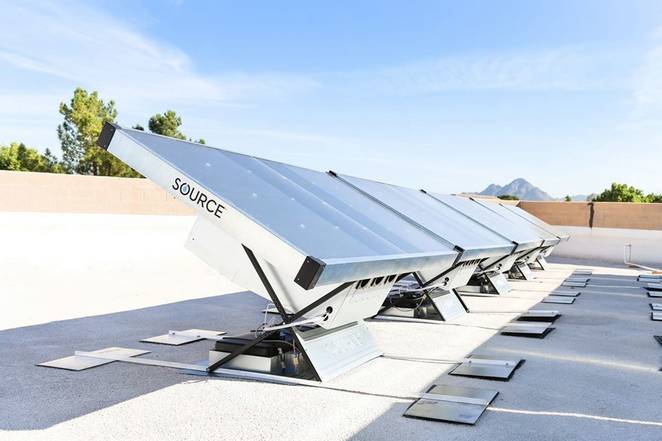
Wisconsin utility We Energies moves away from coal and towards solar generation, a new report on the 5,500 U.S. schools that rely on solar power, and Zero Mass’s solar water-collecting panels are the headlines in this week’s Solar News Roundup.
Wisconsin utility We Energies transitions to solar power
We Energies recently announced two significant company decisions: first, to build 350 megawatts (MW) of solar power by 2020, and second, to close their 1,200 MW coal plant in Pleasant Prairie. We Energies has reportedly been moving coal-fueled power plants to natural gas for several years in order to reach its goal of a 40 percent reduction in carbon emissions from 2005 levels by 2030.
The Pleasant Prairie coal plant is made of two separate units, both more than 30 years old. Although they have been retrofitted with carbon-reducing equipment, We Energies decided against spending more money to upgrade the old facility in favor of investment in renewable development.
The environmental group Clean Wisconsin applauded We Energies’ choices for future power production. “They are recognizing that the future of energy is clean, local, and renewable,” the organization said in a press release. “As the largest investment of clean energy in our state, this will create local jobs and bolster our economy while safeguarding public health and sustaining clean air and natural resources.”
Report: 5,500 U.S. schools use solar power
A new report jointly prepared by the Solar Energy Industries Association (SEIA), The Solar Foundation, and Generation 180 has found that around five percent of all K-12 schools in the U.S. are powered by solar energy. Approximately 5,500 U.S. schools have a combined total of 910 MW of solar power generation, a number that has nearly doubled over the past three years. Many of these schools are in California, but states like New Jersey, Arizona, Massachusetts, and New York also have high adoption rates consistent with their solar-friendly legislation and policies.
A powerful driver of school solar adoption is the potential savings on electricity. Schools are seeing the monetary benefits of producing solar energy that many homeowners with solar already experience. For example, Kern High School District in California estimates that it will save up to $80 million in electricity costs over a 25-year period thanks to its 22 MW solar project.
Additionally, solar projects on school campuses offer students the opportunity to learn about clean energy and see alternative energy options in action. According to Devin Welch of Sun Tribe, students are often the ones pushing their schools to transition to solar power, and some have even gotten jobs with solar installers once their school projects were finished.
Capitalizing on some of that student initiative and excitement, some solar companies are developing renewable energy curriculums alongside local organizations to educate students and teachers. For example, the nonprofit NC GreenPower in North Carolina has a program offering low-income schools a solar curriculum, along with a 5 kilowatt (kW) array to use as an educational tool.
Zero Mass solar panels can make water from air
Zero Mass Water, a water-harvesting company, is using solar energy to combat water scarcity. Their “Source” panels use a porous heat-generating material to collect moisture from the air, which is eventually flowed through a mineral block to add calcium and magnesium to the water. The entire device is powered by standard solar cells in the middle of the panel. Each panel produces an average of two to five liters of water per day.
Cody Friesen, Zero Mass Water’s founder and chief executive, says that the Source panels have been installed in a wide range of environments, from Puerto Rico to refugee schools in Lebanon to wealthy homes in California. “Everybody who drinks water has to make sure that water is healthful and available, right? That’s you and that’s everyone else on the planet,” he said. “So when we think about who the end customer is it really is anybody who thinks about making their water healthful and great.”
Friesen has said that Zero Mass has long-term plans to use Source panels for advanced agriculture. Source panels can produce water even in hot, dry environments, and may represent part of the future for addressing water scarcity issues in a sustainable way.






